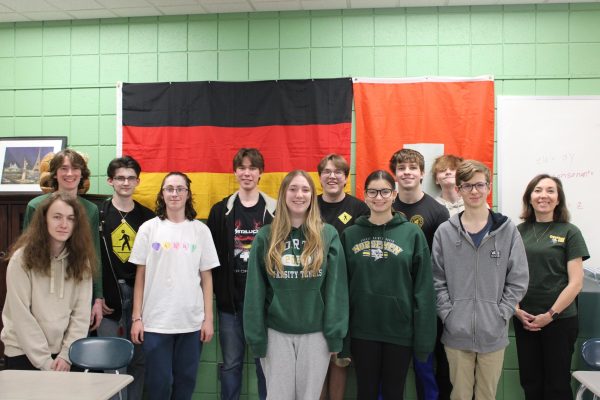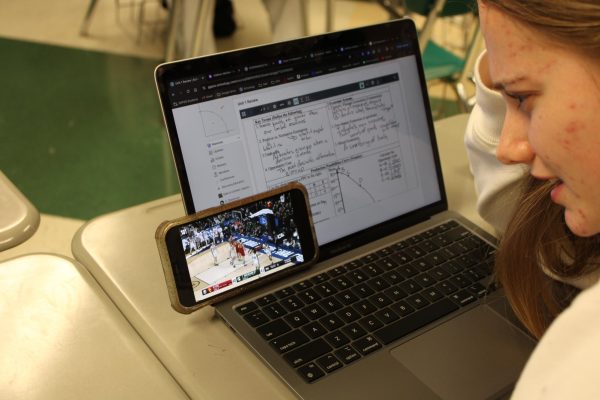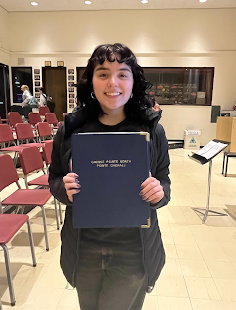Trading in phones for cards: Golm’s Magic kits bring new entertainment to tutorial

Photo credit: Mia Stephanoff
NO “I” IN TEAM | While Magic: The Gathering is a competitive game played against opponents, English teacher Paul Golm believes that the underlying teamwork is what makes the game. “It’s more about learning the game and realizing that magic is about helping other people learn to play because it is a very complex game,” Golm said.
April 5, 2023
In order to promote collaboration and broaden thinking within the classroom, English teacher Paul Golm applied in February to receive Magic: The Gathering boxes from the organization MagiKids, which is used by students to build card decks and play games against each other.
One of the main reasons Golm decided to apply for these kits was to provide students with alternative activities during his tutorial class. Golm says utilizing the Magic kits benefits students as thinkers and learners.
“We are encouraging kids to not be on their phones all the time when they could be reading or interacting,” Golm said. “I was thinking [of] constructive things that my students can engage themselves in that will still help them grow as thinkers, and I know that there are organizations out there like MagiKids that help people promote that game with their students.”
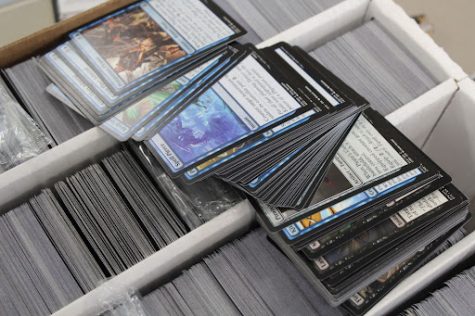
Similar to Golm, MagiKids seeks to promote socialization and fun as a way to encourage learning habits with no technological distractions. The focus is less on phones and more on developing problem solving skills.
“We believe that teaching Magic builds skills such as critical thinking, math and reading. Magic also helps encourage socialization and engagement. At our local MagiKids groups, there’s not a phone in sight.”
In order to facilitate this activity, Golm received around 10,000 cards, along with dice and instructional materials. According to the About Us page of the MagiKids website, teachers receive all necessary materials to facilitate all aspects of the game.
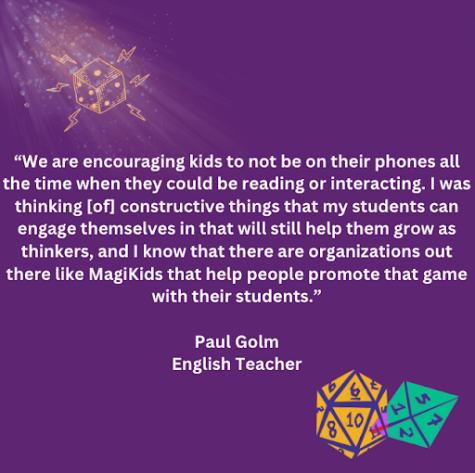
“MagiKids collects unwanted Magic cards, which we provide to teachers and mentors for free. We also supply them with deck boxes, sleeves, dice, and other accessories—anything that helps kids with taking ownership of their cards has a positive effect on their engagement.”
Despite the name, Golm’s new Magic kits do not require a rabbit being pulled from a hat. Instead, this card deck involves trading with other participants. One student who plays Magic: The Gathering, freshman Glenn Moskaluk, looks forward to tutorial with Golm for Magic Mondays and Fridays where he can interact with his friends.
“My initial reaction was like a kid on Christmas,” Moskaluk said. “The first thing I did was, with a friend, start sorting them by colors such as red, green and black.”
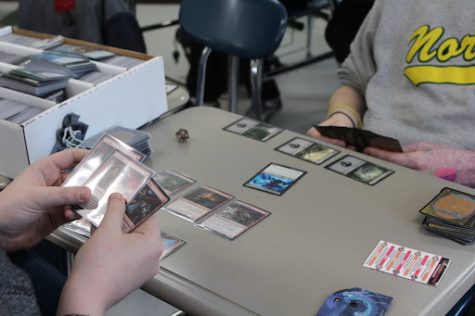
Along with wanting to encourage interaction between peers, Moskaluk believes Golm applied for the kits because he noticed that his students were interested in the first set of cards he already had and brought to class and hoped that getting more kits would expand this interest throughout the school.
“I believe he got them because he saw that my friend and I were interested in them and got more with the idea that more kids may join,” Moskaluk said.
Watching the student’s problem solve and work together when first playing the game is what Golm expressed as his favorite moment following the delivery of the cards. Prior to beginning the actual game, students had to untangle all the rules and learn how to play.
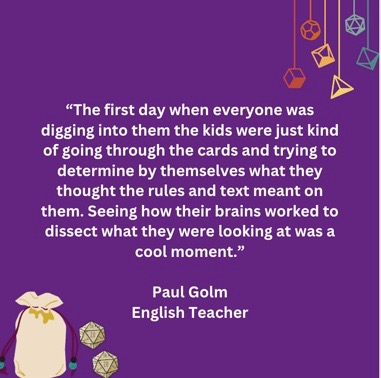
“The first day when everyone was digging into them the kids were just kind of going through the cards and trying to determine by themselves what they thought the rules and text meant on them,” Golm said. “Seeing how their brains worked to dissect what they were looking at was a cool moment.”







